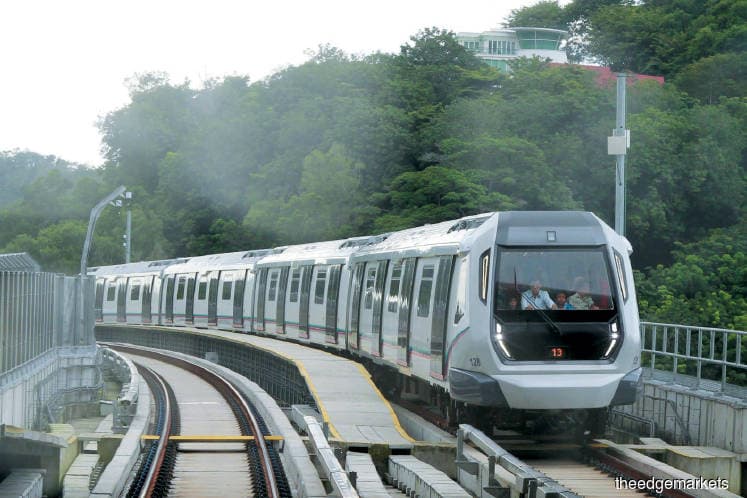
This article first appeared in The Edge Financial Daily on November 8, 2017
KUALA LUMPUR: None of the local firms fulfil all the technical experience criteria required to qualify for the lead contractor’s role to build the third mass rapid transit line (MRT3) on a turnkey basis, according to a preliminary analysis by Nomura Securities Malaysia Sdn Bhd.
The criteria include experiences in performing civil works of either two urban metro projects worth at least RM5 billion, or one urban metro project that is worth at least RM10 billion.
At the same time, Nomura said the requirement for the turnkey contractor to propose a financing package of up to 90% of the total MRT3 cost, which could be worth more than RM30 billion for a minimum of 30 years and sanctioned with a moratorium for the first eight years, is likely to pave the way for a foreign contractor to take up the job.
“Such a huge financing commitment likely rules out any Malaysian contractor being the lead contractor due to relative balance sheet risks,” Nomura’s Global Markets Research analysts Tushar Mohata and Alpa Aggarwal said in a note to clients yesterday.
Describing the call for the MRT3 tender process as a negative surprise for local builders, Nomura said: “We believe none of the Malaysian corporates are keen on the financing role, and will only choose to bid at the subcontractor level for portions of MRT3”.
Meanwhile, CIMB Investment Bank Bhd said it does not discount the possibility of foreign firms from either China or Japan forming a consortium through a strategic partnership with local players, and subsequently bid for the lead contractor’s role.
CIMB said the turnkey structure to build MRT3 is changing the level playing field in the country’s railway scene and deviating from the project delivery partner (PDP) model, an approach that was used to build MRT1 and MRT2.
“This structure is therefore similar to the RM55 billion East Coast Rail Link and the estimated RM50 billion to RM60 billion Kuala Lumpur-Singapore High-Speed Rail,” CIMB analyst Sharizan Rosely said in a note to clients.
Nomura, in its assessment, said the exclusion of the PDP role is negative for local contractors, especially for Gamuda Bhd, which — via a 50:50 joint venture with MMC Corp Bhd — is the biggest beneficiary of the construction of the previous MRT lines and has enjoyed healthy margins for performing tunnelling works.
“If the PDP role is eliminated, it reduces profitability, and margins under subcontract packages tend to be lower,” added Nomura, as it retains a “neutral” call on Gamuda “as the details of MRT3 seem not very promising for the company”.
CIMB, on its part, said the absence of the PDP model is a slight setback for Gamuda, which was touted to be the front runner to be appointed as the PDP for the MRT3 project.
CIMB, however, believes that “chances are still fairly strong for Gamuda to play a significant role in the construction of the underground tunnel for MRT3, given its cost and logistics advantage, and expertise in the geological settings of the Klang Valley”.
For smaller contractors, Nomura anticipated that there will be very few viaduct packages to bid for due to the shorter elevated stretch.
On the other hand, CIMB said other contractors within its coverage could have equal chances of tendering for both the turnkey and subcontract works.
“But for now, we believe IJM Corp Bhd and WCT Holdings Bhd are potential turnkey contenders given their past major rail track records and working relationships with China contractors,” said CIMB’s Sharizan.
Appraising the cost to build the 40km-long MRT3 at RM40 billion, Sharizan said the amount is 25% higher than the estimated RM32 billion cost for MRT2.
For the 40km stretch, Sharizan said the cost to build the 8km above-ground portion could clock in RM3.4 billion, and the cost to construct the underground portion could come in at RM37 billion.
While MRT Corp has not revealed the preliminary alignment of the upcoming rail network, it was, however, reportedly said that the MRT3 line will cover Ampang Jaya, Kuala Lumpur City Centre, Jalan Bukit Bintang, the Tun Razak Exchange, Bandar Malaysia, KL Eco City, Pusat Bandar Damansara, Mont Kiara and Sentul.
The MRT3 line is also said to be integrated with MRT1, stretching from Sungai Buloh to Kajang, and MRT2, which connects Sungai Buloh to Putrajaya via Serdang.